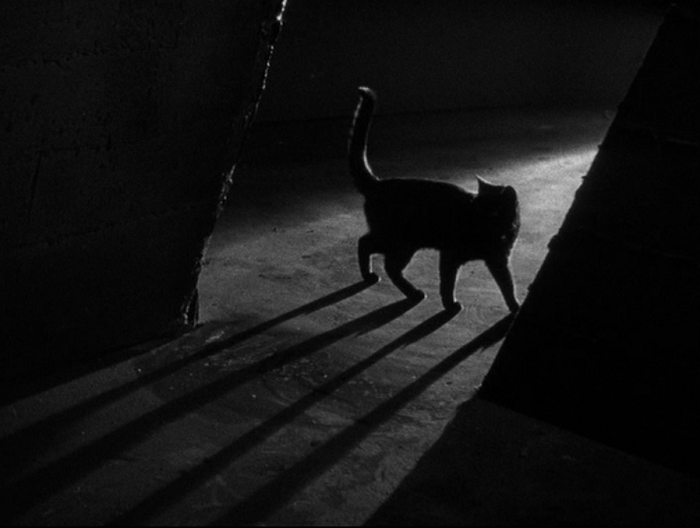
 The Particulars of the Picture
The Particulars of the Picture
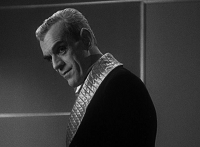 |
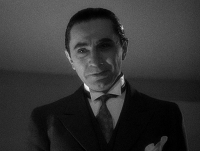 |
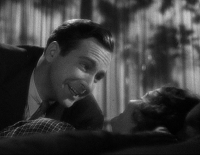 |
| Hjalmar Poelzig … Boris Karloff |
Dr. Vitus Werdegast … Bela Lugosi |
Peter Alison … David Manners |
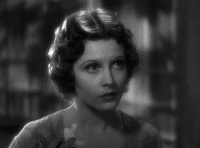 |
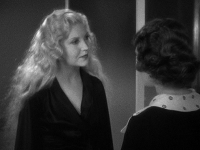 |
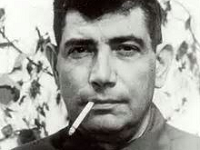 |
| Joan Alison … Julie Bishop |
Karen … Lucille Lund |
Directed by Edgar G. Ulmer |
The Black Cat: Reveling in Horror
It’s been a couple of days since I watched The Black Cat, and now I’m sitting down to write my review. Let me start with something that surprises me 72 hours later: the movie haunts me.
The Black Cat isn’t a spectacularly scary picture, nor is it particularly tense. But the feeling of the film is the damnedest thing; it hardly makes a lick of sense. It survives on dream logic and the whims of haunting moods that hang over it. It’s akin to Carl Theodor Dreyer’s Vampyr or Salvador Dali’s Un Chien Andalou in some respects, where it’s a mood that descends upon you and never lets you go.
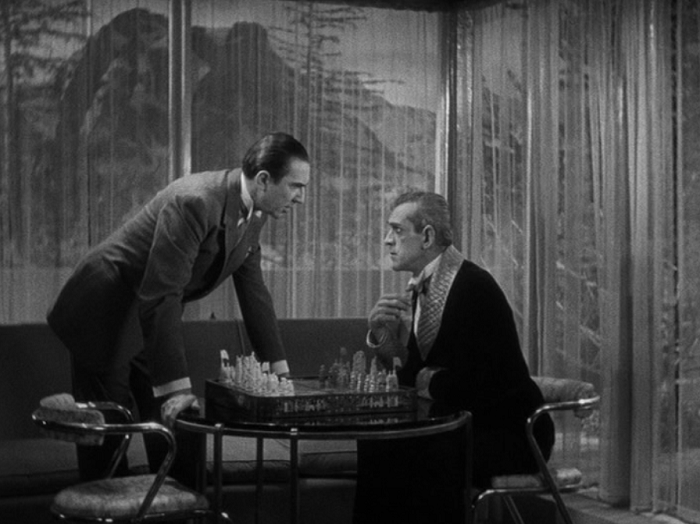
Shall we play a game of death?
I didn’t feel that way when watching it. The first teaming of 30’s horror icons Boris Karloff and Bela Lugosi results in something that looks a little goofy at first. Lugosi has a natural cheesiness that’s too easy to see through nowadays, and Karloff’s uses of long silent leers grew tiring during The Mummy, let alone here where his character obviously still has operational vocal chords.
But as the film winds on, the story begins to unfold, and those leers of Karloff become malicious little sneers. As Lugosi prods and pokes at him, they become scarred sides of the same coin, and the art deco mansion they inhabit begins to loom over them. The move twists, turns, and becomes what is more conventionally known as ‘fucked up’.
But, as I have a tendency to do, I’m getting ahead of myself.
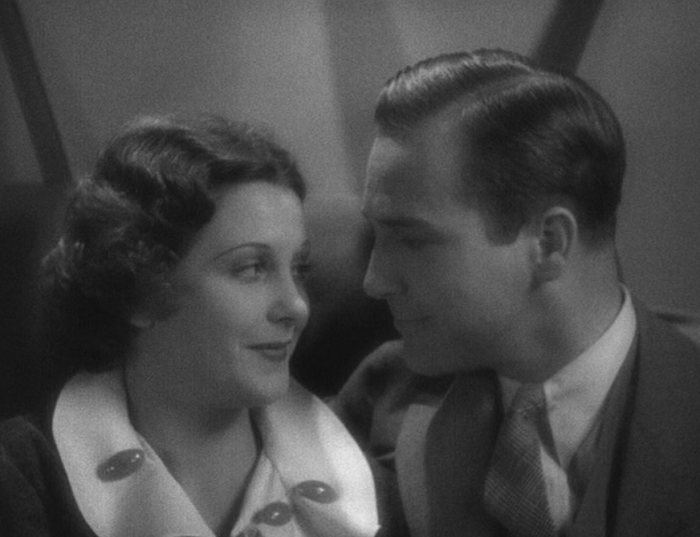
“Hello, darling. Are you in the mood for existential horror?”
We begin our film with a pair of Americans on a train setting out towards their honeymoon in Hungary. They’re Joan and Peter, a pair adorable enough to give off cavities. They’re just about to enjoy a decadent meal in their private train car when they’re informed that they’ll be having another passenger join them. That’s Dr. Werdegast.
A brief note on Lugosi’s Werdegast here: he’s ostensibly the hero of the piece, but simply casting Lugosi in the role will cause some intentional distance from the audience. We quickly learn that he’s spent 18 years in a Russian gulag after a disastrous battle during the first World War, and now seeks to return home in an attempt to find his wife and daughter and get revenge on the man who betrayed him. It’s sympathetic until we see him fondling Joan’s hair as she sleeps.
He’s not all there. It’s to Lugosi’s credit that he can cultivate a sympathetic air while still indicating a deep well of anger and perversion. Perhaps no other actor of the era wore tragedy on his face quite so well, and Lugosi’s spotty rhythms give his performance a supernatural grace. He’s like one step removed from an actual human being at all times, yearning for emotions but being pulled towards some baser, wretched void.
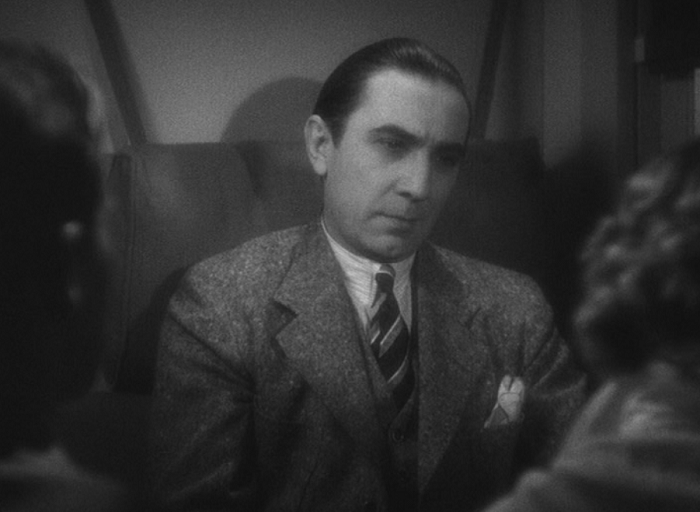
“Forgive me, I thought it looked like she needed pets.”
That void, of course, is where Karloff’s Poelzig has decided to build his home. Poelzig was an engineer in the Hungarian army who betrayed the troops under his command, resulting in the massacre of 10,000 men. He now resides in a mansion built upon the old fortifications there, and it is here to which Werdegast will seek his revenge.
Peter and Joan get roped into staying at the mansion as well after a car accident severely injures Joan en route to their honeymoon spot. The building itself, rather than a creepy old castle or even a shack with a couple of spare secret passages is a massive modernist building whose sleek lines give off the air of futurism but still loom ominously over everyone.
Karloff finally makes his appearance, and it’s a doozy. His star had risen so fast and so far in a short time that the movie has fun with it, acknowledging his great fame in two places. First is his credit above the titles– “KARLOFF and BELA LUGOSI” it reads. Next is his introduction: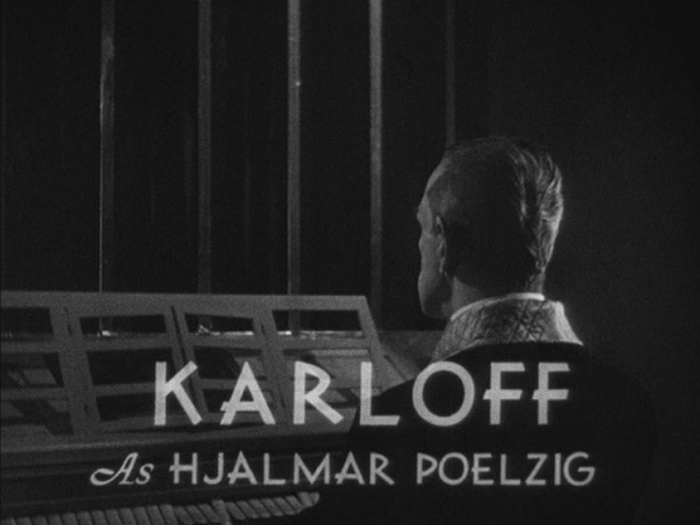
They don’t even have to show you his face! You know what you’re getting with Karloff. Unlike Lugosi, Karloff deep seated eyes and long pointed chin never during his career verged into self parody. He pulsates with menace, has the face of a gremlin, and possess one of the wickedest smiles in all of cinema.
Poelzig invites the guests to stay, and almost immediately takes a less-than-healthy interest Joan. It turns out that he’s married to Karen, Werdegast’s daughter, and that he had previously married Werdegast’s wife before she passed away some years earlier. If that’s not enough, in his basement he keeps a half dozen dead women preserved in glass cases, where he can come down and behold their beauty as he sees fit.
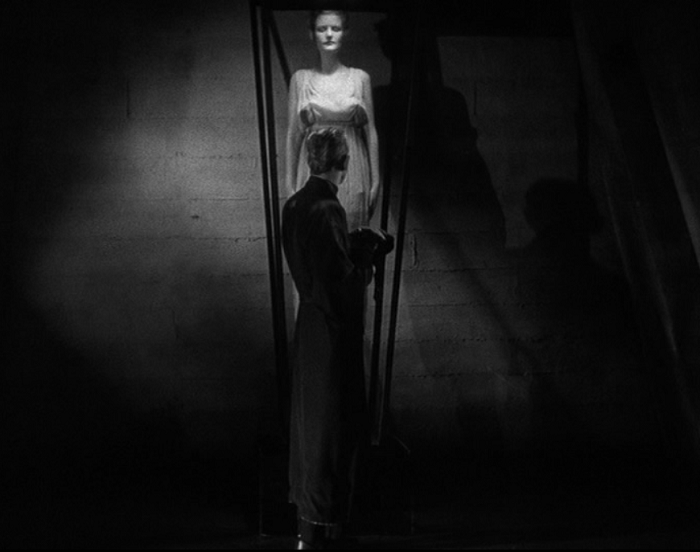
It’s… pretty messed up.
Werdegast is cordial with Poelzig, and decides to bide his time and get his revenge when the time is right. Poelzig instructs Karen to remain in her room and then proceeds to play Werdegast in a game of chess to determine whether or not Joan will be allowed to leave the mansion or if she will become the next human sacrifice at his upcoming ritual.
Oh, he’s a Satanist, too. Did I mention that? There’s so much twisted about Poelzig, who stands on the tomb of the men he’s betrayed and builds a masterpiece of hubris and disrespect. The weird thing about this (yes, just one) is that there are moments where you sense that Poelzig may still feel some fleeting glimpses of guilt about all of this. He lies to Werdegast about his wife and daughter, and treats the man as an honored guest. He knows he’s betrayed this man on unconscionable levels, but he still senses a kinship with the man that he yearns to respect.
Peter blunders into this situation and aims to be amicable, further defrosting the conflict between Werdegast and Poelzig. He takes a drink with the men where we learn that Poelzig is a great engineer, Werdegast is a renowned psychiatrist, and Peter is a bad mystery writer. As Peter continues to mess up (more on this below), it’s obvious that his job is ironic. How can someone who writes mysteries at all be so bad at being in one himself?
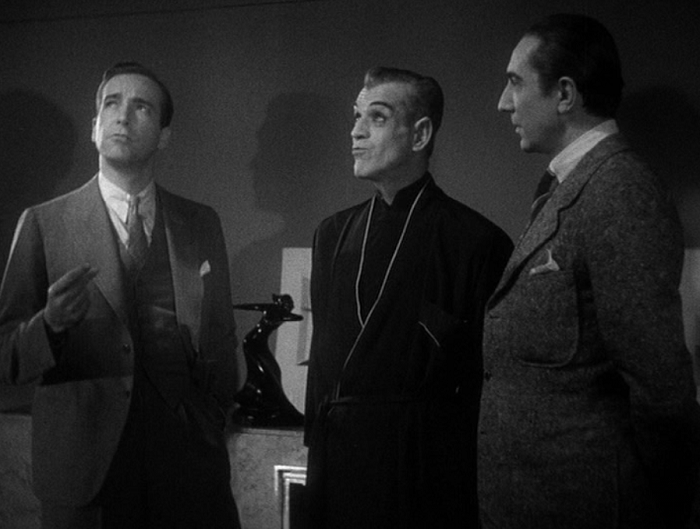
“Mr. Alison, would you believe the word ‘gullible’ is written on the ceiling? … of course you would.”
The titular black cat makes an appearance, and is called the embodiment of evil and death; Werdegast is horrified by it, while Poelzig embraces it. More on its meaning below.
Their chess match reaches a conclusion, and it sets up a showdown between Werdegast and Poelzig on the eve of the dark mass, on the night that he and his followers prepare to sacrifice Joan to the devil.
The film’s climax is a variety of eerie moments, climaxing in Werdegast’s final revenge on Poelzig, something completely brutal and horrific that we only see in shadows. That’s for the best: our imaginations make the skin crawl spectacularly.
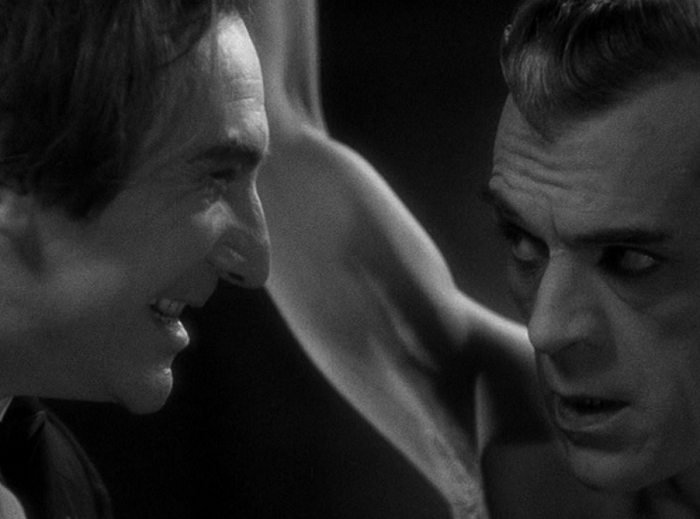
Poelzig has no idea what he’s in for.
The film feels like something that should be as conventional as the other Universal horror pictures emerging at that time– Dracula, Frankenstein, et. al– but the little miscalculations, the chopped editing, and that glower that Karloff levels all elevate it spectacularly into a different realm.
This is Director Edgar G. Ulmer’s only A-level studio picture he had the chance to make, and he fills it with stark sets and an atmosphere of barely contained terror. The film’s mood just hangs over you, and all of its incongruities make it seem grander and darker than just the visuals can grasp.
Note how Ulmer uses the camera in several spots, like when he briefly takes Poelzig’s point of view for an exit of the dungeon, or when actors stray a lot closer than usual when depositing an unconscious body. The series of closeups at the black mass are also telling, using the faces of utter devotion to unnerve the audience by the sheer stoic pleasure these characters are deriving from their wicked prayers.
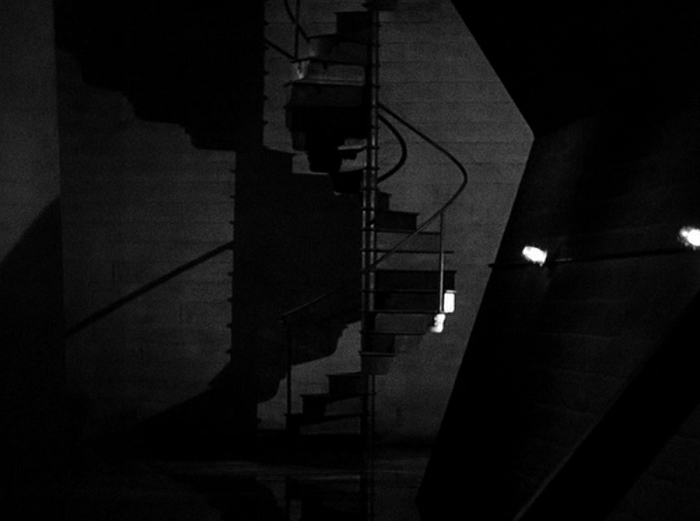
The most ominous staircase.
For Lugosi, this was a career highpoint. One of the rare opportunities to play an anti-hero and he makes good of every nasty moment of it. Ulmer, too, took advantage at his one big shot in Hollywood and made a film that serves as one final brilliant gasp of Pre-Code horror. Films wouldn’t be this scary again for a long time.
But What Does It Mean?
[This section is chock full of spoilers; skip ahead to stay clean]
There are lots of different interpretations of The Black Cat out there. One source I read argued that it’s a chess match between God and the Devil, and another supposed that it’s a parable about the relative naivete of youth.
Ulmer’s commentary isn’t oblique, in my opinion; Americans don’t truly understand or appreciate the horror of the first world war. Noticeably, Peter and Joan never really seem to grasp the entirety of the situation they’re involved in. Peter in particular blunders his way through most of the movie; you know he’s ineffectual when he gets his ass kicked and knocked out by the butler.
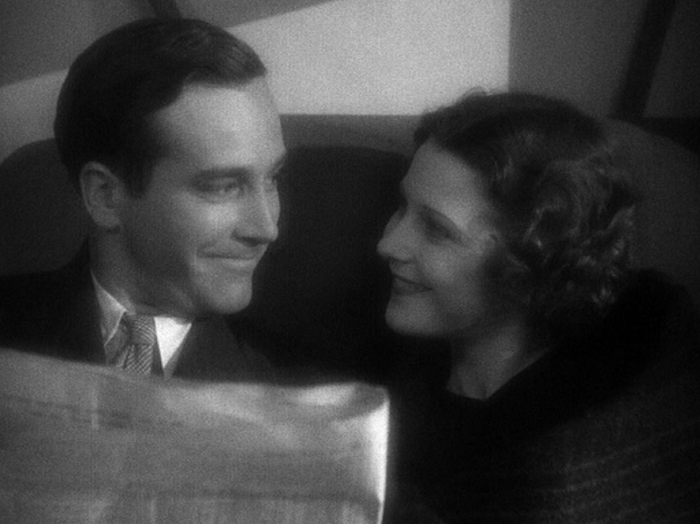
Damn, Peter, you’re such a tool.
Ulmer’s nationality is Hungarian, and I doubt that it’s a coincidence that he shares this with Poelzig and Werdegast. The view of the film isn’t so much that Peter and Joan are the heroes, but that they can’t comprehend the horrors of the world they’ve suddenly stumbled into. This looks to me like a thinly veiled parable on the first world war, another situation where the Americans wandered in, wreaked havoc, and then left blissfully unaware and guilt free from the atrocities that their intervention had caused.
Both Peter and Joan drive this home at different points in the film. Peter’s is the end where he shoots Werdegast who is in the midst of helping his wife retrieve a key. It’s understandable with the confusion of the moment, but pig headed and again underlying how ineffectual Peter is throughout the piece; he rushes in to be the hero, and once again fails miserably. Cue fleeing.
Joan’s is a bit more subtle, as when she is told by Werdegast about what Poelzig has done to his wife and daughter. “And you let him live?” she demands. The line sticks out like a sore thumb because, besides her trance earlier, it’s the only time Joan seems to express a whole opinion. It’s so nasty and forceful; not asking but urging that Werdegast kill. This is at the point where she first realizes she’s trapped, and her motivation in pushing it is simply to guarantee her own safety. It’s a childish reaction, one of somebody who only understands things in a basic black and white manner.
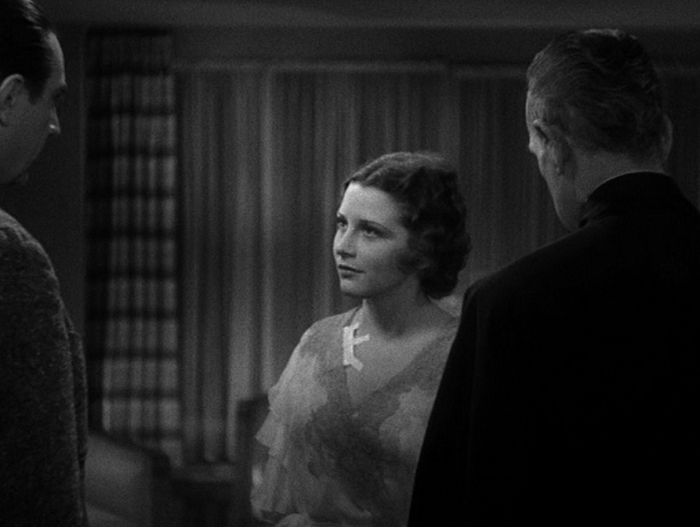
“Haven’t you two enacted your blood vengeance upon each other yet? I’ve got places to go, people! Let’s get a move on!”
The film ends as Joan and Peter return on their honeymoon, blissfully unaware and completely unable to explain what they’ve been through. They read a review of Peter’s latest novel that dismisses it as unbelievable and share a look. As crazy as the world they left behind? Even then, they don’t understand what they’ve been through. It’s a memory to be forgotten; for many Hungarians and other Europeans, the war is something they’ll never put behind them. Its horrors will always reverberate.
The Supernatural and The Baloney
“Sounds like so much supernatural baloney to me.”
“Supernatural… perhaps. Baloney… perhaps not. There are many things under the sun.”
That’s Peter and Werdegast there (and, trust me, you haven’t lived until you’ve heard Lugosi pronounce ‘baloney’). But the really funny part of the line is that there doesn’t actually appear to be anything that occurs in The Black Cat that is supernatural in the slightest.
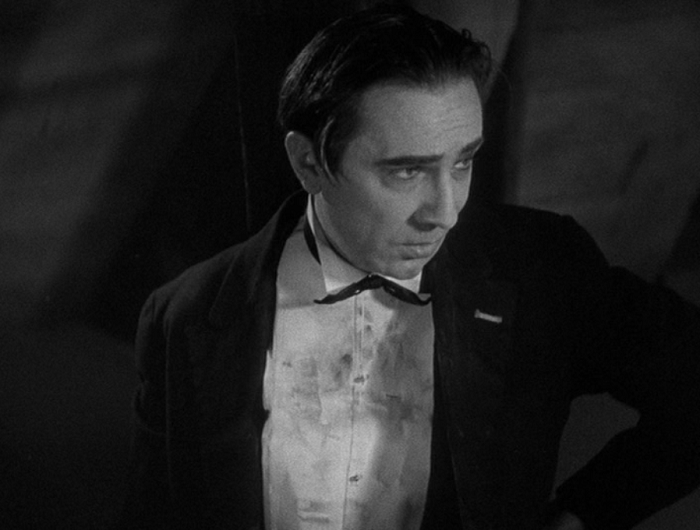
“Baloney? I never eat… baloney.”
This dialogue may remain in here because extensive cuts ended up removing some supernatural elements (more on that below), but I have a pet theory that I don’t think will get me many supporters but I find convincing.
The mass of the Satanists near the end, which involves men and women in long dark cloaks, climaxes with a woman screaming and fainting in the middle of the ceremony. Now I’ve mentioned before how the film’s choppy editing seems to work in its favor, and here is an example of it: before the woman faints, we see her turning. However, unless we’re looking in the soft-focused background of the previous shot, we wouldn’t know that she’s turning to watch Poelzig about to sacrifice Joan.
But the way this blonde woman looks, and the way that she turns her head back forward before she faints piqued my curiosity. This is what kicks off the climax of the film, and its hard for me to believe a die-hard Satanist would really be overwhelmed in what appeared to be a series of sacrifices. Her look and terror seemed to be past Karloff to me… and it made me wonder if what she really saw was the arrival of the guest of honor.
Everything falls apart after her fainting (and the Satanists outside of Poelzig vanish entirely from the rest of the film), making me wonder if their next act had shown them getting what they wished for.
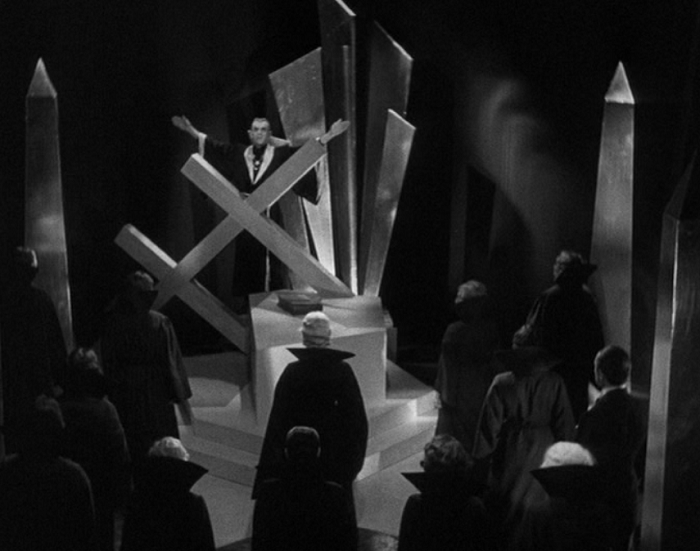
That’s a pretty sweet Satan altar, for the record.
But, I’ll be the first to admit I could be wrong on that. The Black Cat is a film that thrives at its margins, where it lets the audiences imagination squirm at the end of its devilish hook. It’s unsettling, and amazing.
Proof That It’s Pre-Code
- Well, Satanism never really gets to look like this much fun again for a few decades.
- Poelzig’s gallery of the dead women sure seems to border on necrophilia.
- Werdegast notes that Poelzig had lusted after his daughter ever since she was younger. Considering he’s been away for two decades and Karen still looks 30, tops, this would seem to indicate some pedophile tendencies.
- Werdegast, a psychiatrist, also plies his way as a medical doctor on occasion. He comes to Joan’s room to take a look at her wound after the car accident, announcing excitedly to the woman in her pajamas, “I must examine the dressing!”
- Poelzig’s desires to covet Joan are less than saintly in every regard. Besides the out and out accusations– “There was nothing spiritual in your eyes when you looked at that girl!”– Karloff gets to have some fun with various figures he has laying about, stroking a queen from the chessboard at one point and grasping at a nude female statue with great force when Peter and Joan kiss.
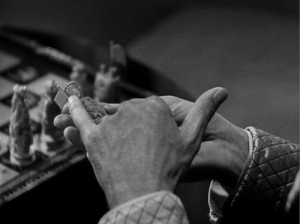
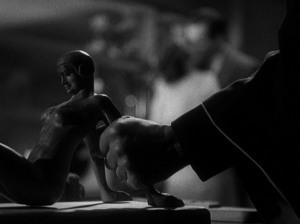
Gallery
Here are some extra screenshots I took. Click on any picture to enlarge!
Trivia & Links
- I made sure to specify above that my review is based on the movie as it currently is now, and that’s because the movie is one of those with a troubled history. During the production of the film, the studio chief was out of town, leaving director Ulmer to go hog wild. 366 Weird Movies details some of the more extreme stuff that made it into the movie’s first cut: rape, a more vivid scene of the results of Poelzig’s evisceration and a plot about Joan actually transmorphing into the titular cat. Obviously, if any of this had remained in, the film’s meanings could be completely different, though the film may have also lost some of its power from its feverish logic were the scenes included. Either way, the point is moot since apparently the deleted scenes were destroyed as per the customs of the time.
- This also brings me to the film’s title. It’s ‘suggested’ by Edgar Allen Poe’s short story The Black Cat, which, on the surface, has absolutely nothing to do with the finished project besides the obvious presence of a black cat. However, there are other parallels cleverly snuck in:
- Poe’s story is about the darkness within a man that he can no longer control, even as he tries to be a good man. This matches up with Werdegast’s emotional roller coaster as well.
- The black cat messes up Werdegast’s initial plans as it does the narrator’s in the original story.
- The castle in the film is built directly on the old fortifications. Poelzig entombing his past just like the protagonist’s attempts to do so in the short story.
- More literally, Poelzig also entombs women in their own special cases– though it speaks to his perversion that these cases are clear rather than made of brick.
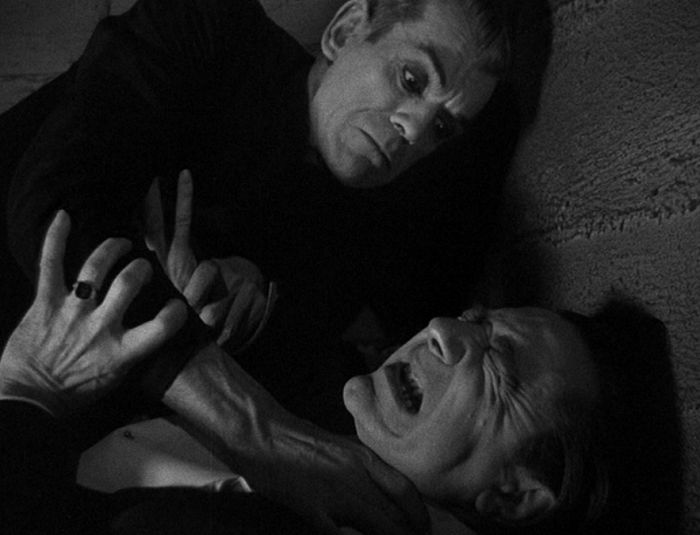
For anyone curious, apparently these two had a cordial working relationship together. Though the fights sure do look pretty brutal.
- If you are looking for a more faithful version of The Black Cat, I highly recommend Stuart Gordon’s version from the “Masters of Horror” anthology starring Jeffrey Combs. Here it is on Amazon.
- Ehsan Khoshbakht for Notes on a Cinematograph does a wonderful job going into the film’s origins as well as the real life inspiration for Poelzig, a respected German architecture professor of the same name. He also goes on to talk about how Ulmer transforms the film’s modernist sets into a “source of abomination.” If you read any of the articles here, I highly suggest this one.
- Michael Grost’s bare bones site looks at Ulmer’s pet symbols and themes. It also touches on the influences of Murnau and Lang (including a surprising number of similarities between The Black Cat and Metropolis) and the film’s visual motifs. A good read.
- Karloff’s Poelzing is said to be based on famed occultist Aleister Crowley. Here’s Crowley’s Wikipedia page; I can’t comment any further than to say it’s a shame that Poelzig didn’t try busting that hat out at some point.
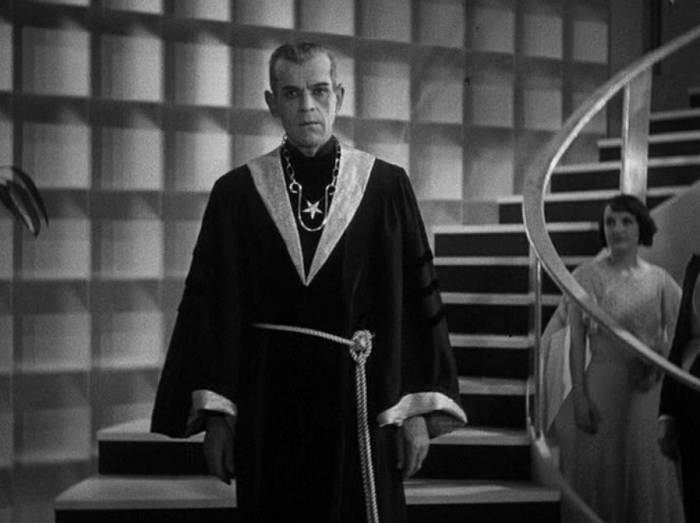
“It is time to get all Satan in this place.”
- Joe Randazzo at PWI Pop saw the movie in a revival theater a few years ago, and delves into its background and Ulmer’s career after the film’s completion. Besides noting a lot of background fodder about the Karloff/Lugosi rivalry, it points out that both men counted The Black Cat among their personal favorites. I especially liked this detail:
It is even said that in 1955, during a theatrical revival of the film in California, Lugosi had stood up in the audience and proclaimed “What a handsome bastard I was!”
- Josh Vasquez for Slant does an excellent job on reviewing the piece, calling it Universal’s ‘tone poem’ and “rawly symbolic.” He also believes it to be horrifyingly prescient, as it shows a man trying to conquer death, but whose black soul is looking towards the horrific acts that the rest of the 20th century still held.
- AMC’s Filmsite gives a good beat by beat overview of the film’s plot plus a bevy of quotations.
- The driver of the car who crashes and sends Joan, Peter and Werdegast onto Poelzig’s has a rather distinctive arrangement of facial hair. That may be because he’s rumored to be an homage to the title character of F.W. Murnau’s The Last Laugh (1924), which Edgar G. Ulmer did the production design on. If you’ve seen Last Laugh, the irony in Ulmer allowing the film’s doorman to die an inglorious death here is pretty funny.
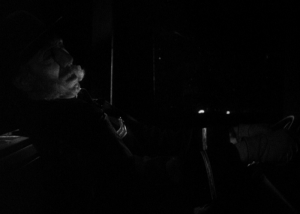
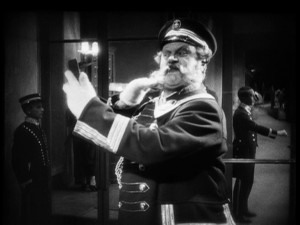
- Doom Cheez Cinema (yes, I know) believes that there’s a modeling of Poelzig on German director Fritz Lang. He also touches on the Lugosi/Karloff dynamic and compares their acting to the Japanese school of Noh.
- Andre Sennwald’s 1934 review from The New York Times seems to fit in with the general negative response the film initially received. He praises some aspects but then laments that it is “more foolish than horrible”. He also says that the story “pile the agony on too thick to give the audience a reasonable scare”, which is a reminder to those precious times when people thought too much of a story was just as much as a hindrance as too little.
- I really liked this line from Jeremy Heilman on the film’s last few moments:
Even their joke in the final scene feels less like a return to normalcy than an assertion that normalcy is naïve.
- In case anyone hadn’t noticed, the film spells out its theme in the very first shot:
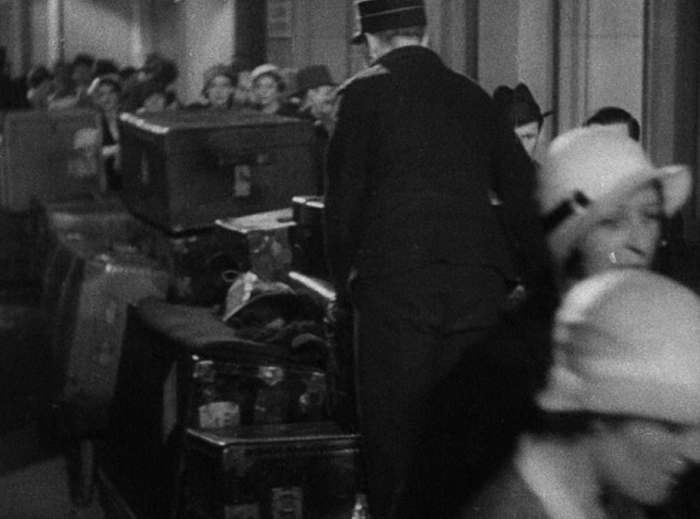
BAGGAGE.
- The Last Drive-In goes into this one fairly deep and has lots of behind the scenes pictures and analysis of where its themes and story comes from. If anything in my review leaves you wanting, read their piece, it’s amazingly thorough.
- I can’t be the only person to have noticed this, but there are an incredible amount of similarities between this film and the low budget cult classic Manos: The Hands of Fate (1966). Both figure around a satanist with multiple wives who wants to adopt another into his brood. Even Bela’s awkward fondling is mirrored!
- When searching for posters, I came across this pretty sweet fanart for the film. Check it out.
- Poster roundup:
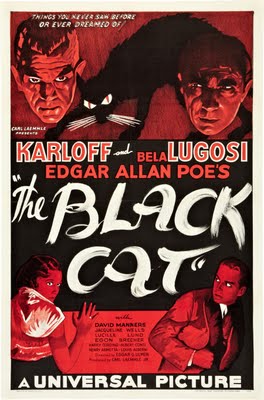
That’s a sweet damn tagline.

I had no idea William Powell was in this movie! … oh, wait, that’s Lugosi.
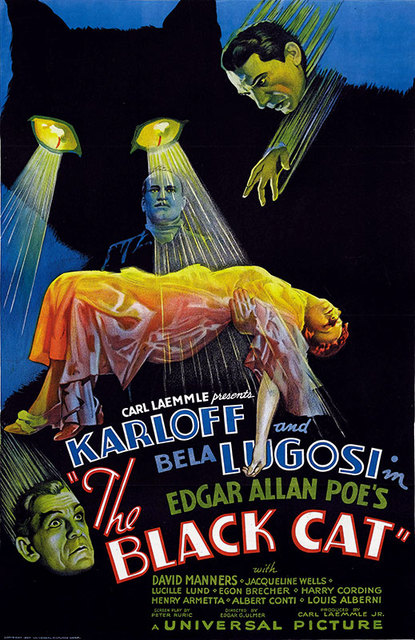
This is wonderful, but the wonder mostly comes from Lugosi and Karloff’s heads looking like they’re in a twisted game of Pong.
- One final, last note: the film is another where the whole house has been rigged with dynamite so that it may be destroyed in a pinch. Was this a common design feature in 1930’s homes? I’d be wary of it if you’re going to be looking for a new place any time soon.
Awards, Accolades & Availability
- In the Wikipedia List of Pre-Code Films.
- Part of the Universal Horror series.
- Universal’s highest grosser for 1934.
- This film is available in The Bela Lugosi Collection, along with Murders in the Rue Morgue (review coming soon), The Raven (which is a reversal of this film but a bit more conventional), The Invisible Ray (cheesy fun) and Black Friday (skip it).
- It’s also available in a single disk version on Amazon and can be rented from Classicflix.
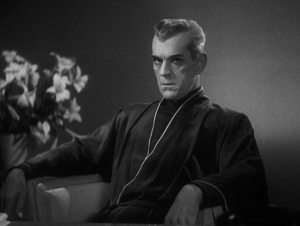 |
Comment below or join our email subscription list on the sidebar!Home | All of Our Reviews | What is Pre-Code? |
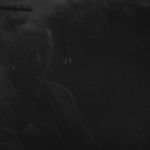
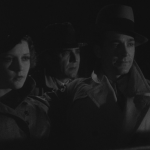
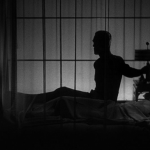
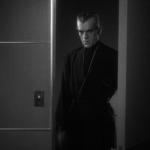
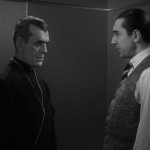
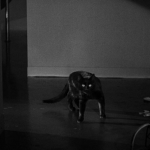
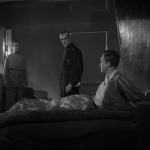
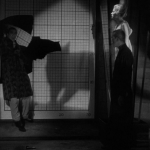
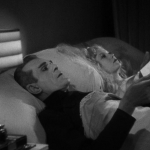
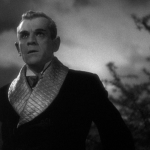
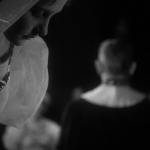
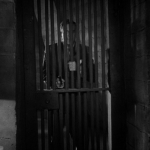
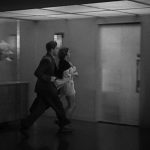
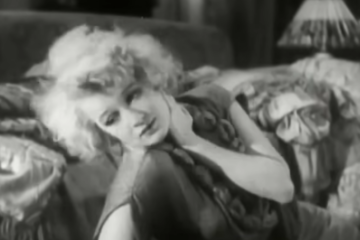
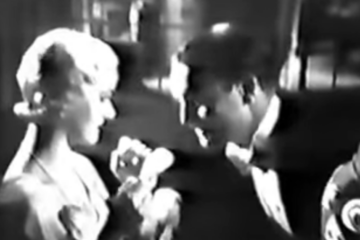
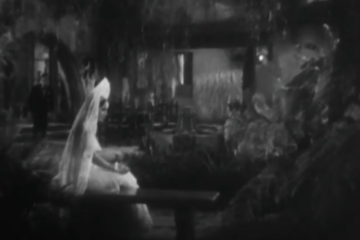
15 Comments
monstergirl · May 3, 2013 at 2:18 am
What an incredible overview of the film. Thoughtful, hilarious and interesting as hell. Thanks for the tout to my post as well. And I agree with you about Manos. Love it
Danny · May 3, 2013 at 9:59 pm
I was kind of shocked by that connection– something about Manos is so weird and dreamlike, and I think that comes from Black Cat. And both almost benefit from really weird editing, though the acting and script in Black Cat make it legitimately haunting rather than stupefyingly so. Glad you enjoyed the review!
monstergirl · May 4, 2013 at 7:43 am
You know I had recently watched Manos and had considered giving it the Pow Pow Pow award for worst horror film, but strangely I found myself thinking that the film was so odd it wasn’t BAD in the way Robot Monster or Curse of the Swamp Creature is. I’m going to re-watch it now, with an eye on the connections you’ve raised…
Danny · May 4, 2013 at 1:22 pm
Heh. Well, I watched Manos without the benefit of Mystery Science Theater once, and while it’s not awful, it’s still Plan 9 levels of incompetent in a lot of ways. Of course, the sincerity of that may come across as charming in some ways, but I think a good dose of alcohol or good spirits may be needed to make it through there.
I’m also of the opinion that a bad movie made sincerely is always better than a decent movie made without a heart. Manos works for me in that way, and probably why I’d watch it again before I sat down for something like The Avengers or John Carter.
Caren · May 3, 2013 at 7:31 am
Fabulous research and as usual great review with funny insights. Definitely on my “to watch” list.
Danny · May 3, 2013 at 9:49 pm
It’s a fascinating film. I hope you enjoy it!
Classicfilmboy · May 5, 2013 at 10:30 am
I enjoyed your look at this movie and really need to see this.
Danny · May 5, 2013 at 9:25 pm
Definitely do. Hope you enjoy it!
shadowsandsatin · September 21, 2013 at 8:12 pm
Great write-up, Danny (duh). I will never see this film (too chicken), but I sure did love what you had to say about it.
Danny · September 21, 2013 at 11:27 pm
Ha! It’s only a movie, Karen, I promise you that Boris Karloff does not pop out of the screen and try to sacrifice you to Satan. … Though that would be pretty cool.
James T. Wilson · January 19, 2014 at 8:00 pm
The First World War is hardly one whose horrors were caused by American intervention. Most of those horrors were well underway before 1917 and the Americans weren’t really involved in any way that affected Hungarians until after the war’s end. American support for nationalist movements did lead to the dismemberment of the Kingdom of Hungary, but that was really just a ratification of what had already gone on.
Danny · January 23, 2014 at 8:48 pm
I don’t disagree, but I think the naivete of the Americans in entering the war is reflected by the Americans inserting themselves into the film’s situations. It’s not necessary a blaming of the Americans for what’s happening, but a way for Edgar Ulmer to show a country that came out of the war scarred but relatively unscathed just how dark and twisted the real situation were for those who fought on their own soil.
(if this contradicts my review at all, sorry, it’s been a while)
rob! · September 24, 2017 at 11:53 am
Danny-
I know I’m very late to the game here, but I want to thank you for this post. I will be reviewing this movie for my film podcast shortly so wanted to do some research on it, aside from just re-watching. This post was truly great, in depth and thoughtful but also very funny. No baloney!
gr8dismal · April 1, 2019 at 12:35 pm
always been fascinated by this film, thanks for the incredible work-up of facts/opinion/lore.
the off-camera violence is a much more effective device, to me, than today’s outright graphic representation. the same is used in angels with dirty faces when cagney goes to the electric chair, in the first cape fear when the prostitute is so affected she ain’t talkin’ and getting immediately out of town, and the reactions of trevor howard and joe cotton to unseen children diseased by tainted serum in the third man, to name a few other fims.
btw, the picture is an art deco tour de force, right down to karloff’s haircut.
thx again.
sydney · January 21, 2021 at 11:12 pm
I’ve always loved this film. I’ve tried (unsuccessfully) to find a copy of the original shooting script, since I collect screenplays. No luck, I guess none survived. Thanx for a great review and superb links.
Comments are closed.